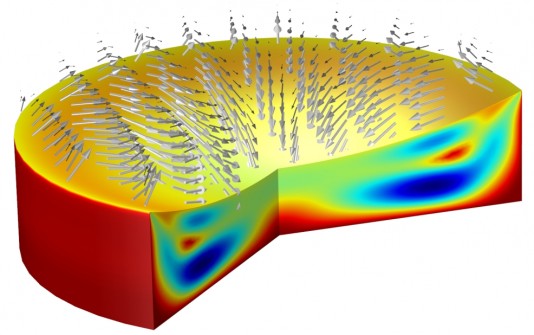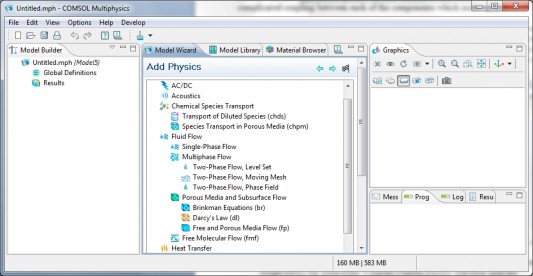The new module provides an integrated environment for modeling microfluidic and rarefied flows, including many effects in passive electronic display technology, blood flow, rare gas flows, biosensors, and more.
Cosmol today announces the release of Microfluidics Module for Cosmol Multiphysics, an add-on for the study of microfluidic devices and rarefied gas flows by researchers, engineers, and experimentalists in the fields of microfluidics and vacuum science.

Target application areas include lab-on-chip devices, digital microfluidics, biosensors, electrokinetic and magnetokinetic devices, inkjet technology, and vacuum system design. The module is accompanied by a suite of tutorials and industrially relevant models that serve as both instructional examples and as a foundation for future work.

The Microfluidics Module includes interfaces for single-phase flow, which make possible the simulation of such applications as compressible gas flows at low pressures, non-Newtonian flows (such as blood flow), and laminar and creeping flows that typically occur in lab-on–a-chip systems.
Cosmol says a particular strength in this module is its modeling interfaces for executing two-phase flow simulations using the level set, phase field, and moving mesh methods. A variety of fluid-interface effects are included such as surface tension forces, capillary forces, and Marangoni effects.
By combining the flow simulation tools in the new module with Cosmol Multiphysics make it possible to set up coupled electrokinetic and magnetohydrodynamic models for the simulation of electrophoresis, magnetophoresis, dielectrophoresis, electroosmosis, and electrowetting effects that are used alone or in combinations in both existing and emerging passive electronic display technologies.

The Microfluidics Module comes with a new free molecular flow interface that uses the fast angular coefficient method and allows for simulations where the molecular mean free path is much longer than the geometric dimensions. Combined with COMSOL’s LiveLink interfaces for industry-standard CAD packages, this tool is invaluable for vacuum system design because it enables users to run quick parametric studies of chamber geometries and pump configurations.
Microfluidics Module Highlights
- Model single-phase, multiphase, and porous media flows with dedicated physics interfaces.
- Multiphase flows can be simulated with Level Set, Phase field, and Moving Mesh physics interfaces.
- Incorporation of essential microfluidic effects such as electrophoresis, magnetophoresis, dielectrophoresis, electroosmosis, and electrowetting.
- Model chemical diffusion with multiple dilute species. Diffusion and reactions in one phase of a two-phase flow with the two-phase flow moving mesh interface.
- Solve stationary, highly rarefied flows, such as flows in high vacuum systems, using the free molecular flow interface.

More information: www.comsol.com.





